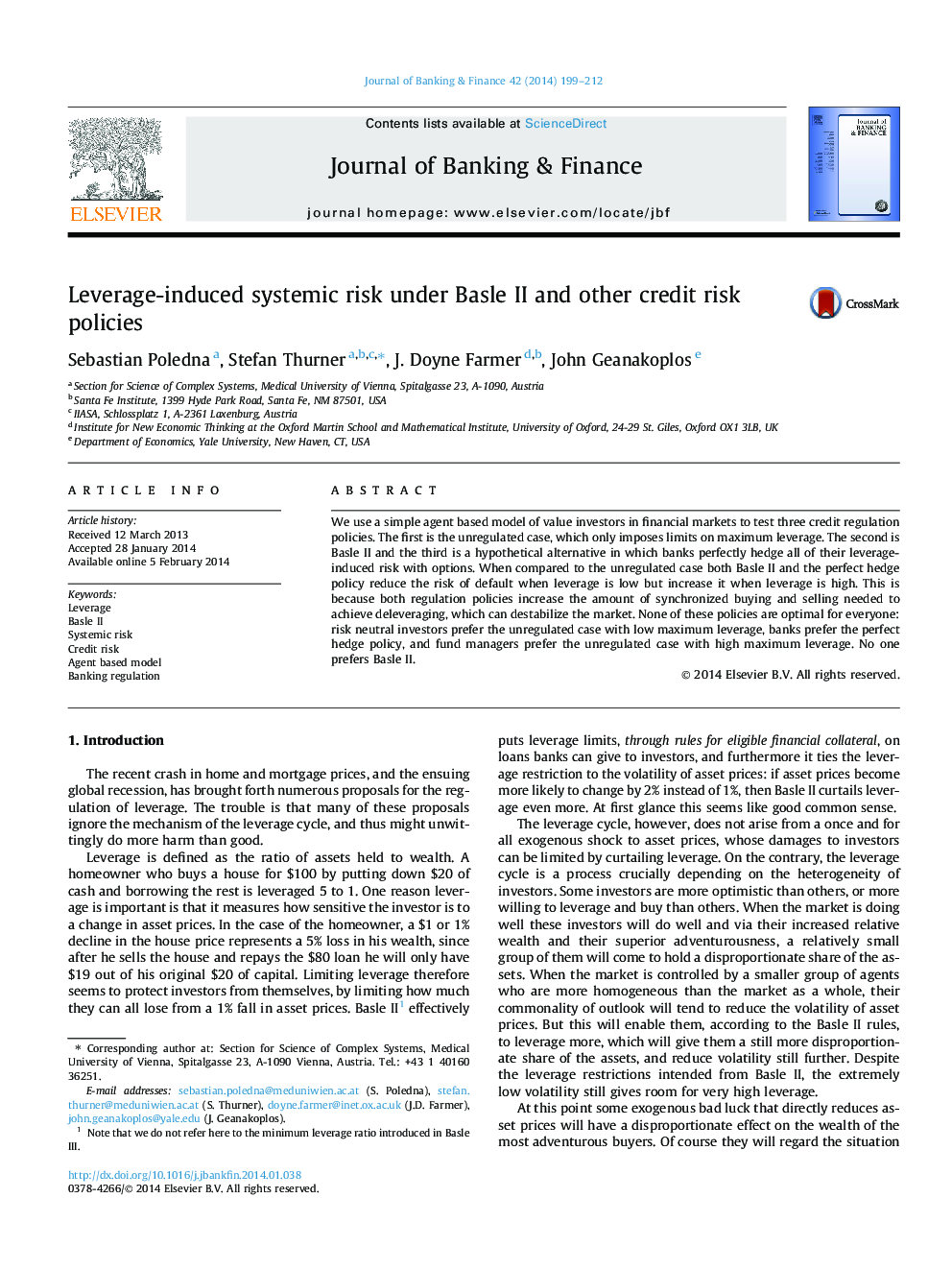| Article ID | Journal | Published Year | Pages | File Type |
|---|---|---|---|---|
| 5089023 | Journal of Banking & Finance | 2014 | 14 Pages |
Abstract
We use a simple agent based model of value investors in financial markets to test three credit regulation policies. The first is the unregulated case, which only imposes limits on maximum leverage. The second is Basle II and the third is a hypothetical alternative in which banks perfectly hedge all of their leverage-induced risk with options. When compared to the unregulated case both Basle II and the perfect hedge policy reduce the risk of default when leverage is low but increase it when leverage is high. This is because both regulation policies increase the amount of synchronized buying and selling needed to achieve deleveraging, which can destabilize the market. None of these policies are optimal for everyone: risk neutral investors prefer the unregulated case with low maximum leverage, banks prefer the perfect hedge policy, and fund managers prefer the unregulated case with high maximum leverage. No one prefers Basle II.
Related Topics
Social Sciences and Humanities
Economics, Econometrics and Finance
Economics and Econometrics
Authors
Sebastian Poledna, Stefan Thurner, J. Doyne Farmer, John Geanakoplos,
